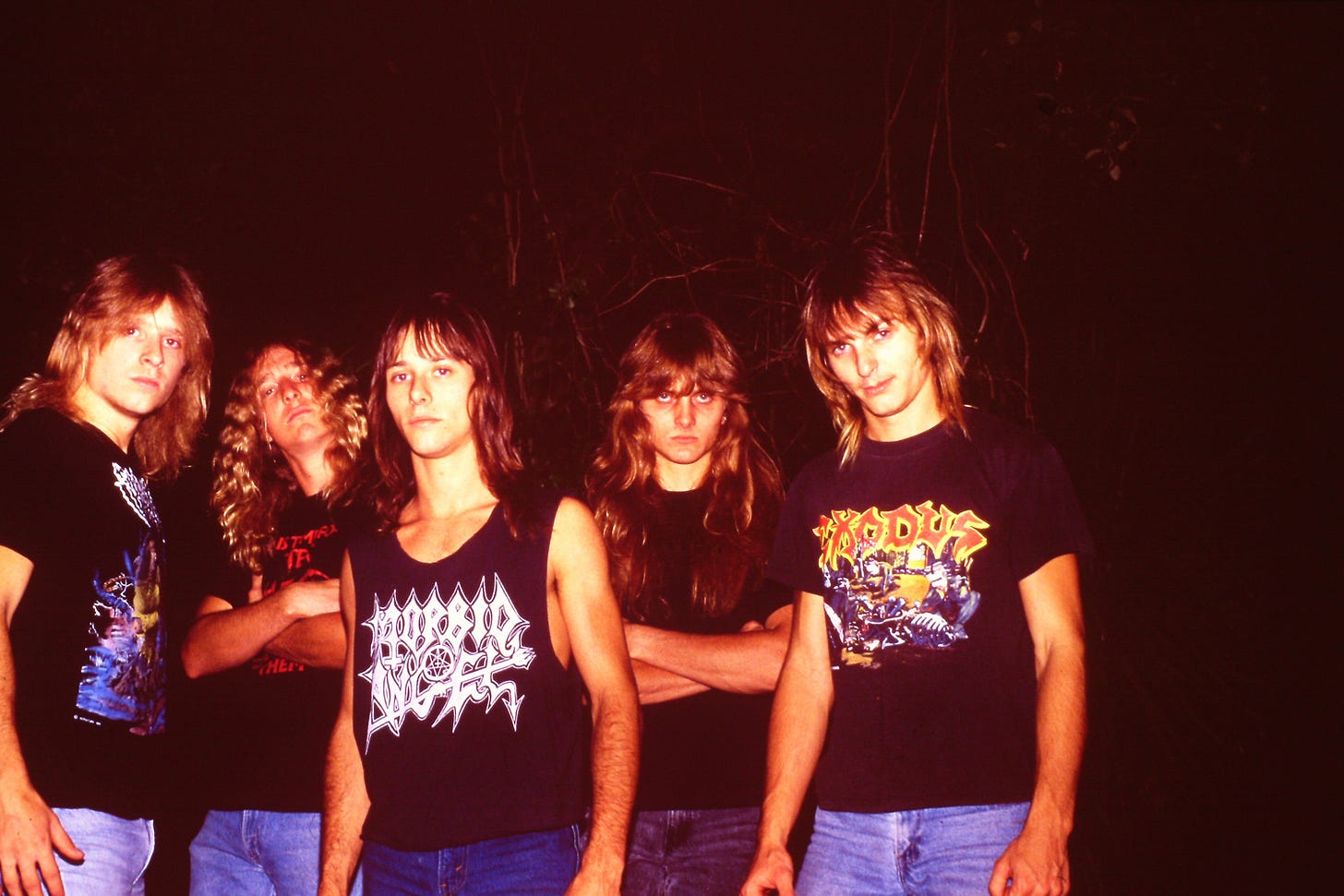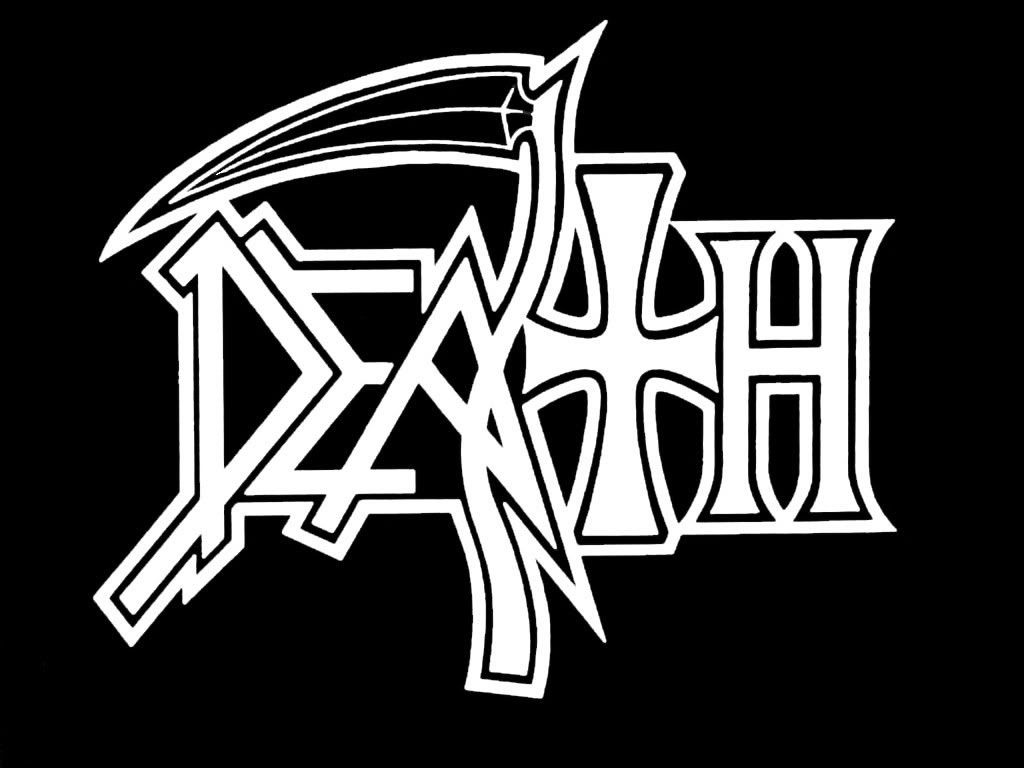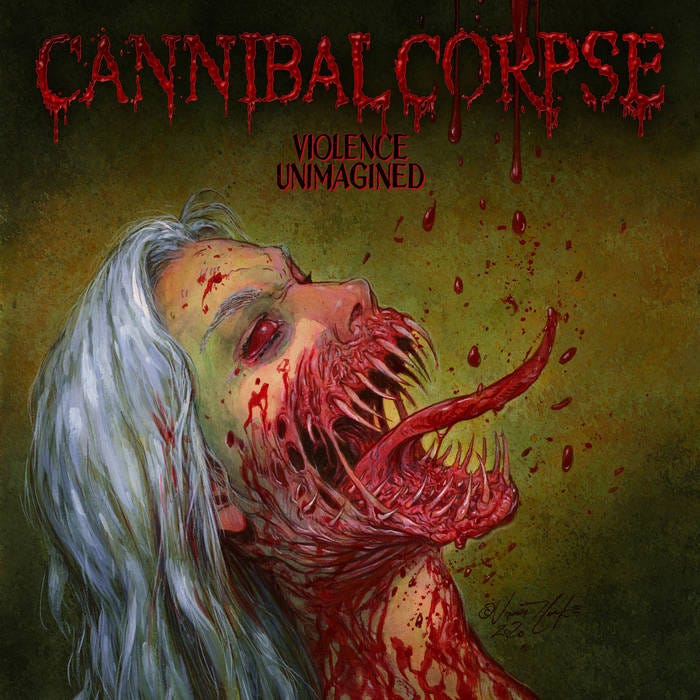Whoops! Looks like we’re late again, but the good news is that the extra time gave me plenty of space to chew on new and interesting albums that I would have otherwise missed! This week we’re going to dive into a great piano album, some remarkably great Christian metal (don’t laugh just yet) and we’ll finally tackle the growling behemoth that is death metal.
Don’t forget to pass this along to any friends who could use an explanation of metal subgenres, a range of metal and non-metal music recommendations, and the occasional essay about whatever I feel like.
ALBUM OF THE WEEK
Zao - The Crimson Corridor
I’m not going to sit here and lie to you by saying that I’ve never liked a single Christian metal project. Sure, the general vibe with most Christian metal bands is the same as this screenshot from King of the Hill but I absolutely grew up listening to bands like Underøath, Demon Hunter, As I Lay Dying (huge oof) and August Burns Red. Well it may have been awhile since I’ve sought one out, but I’m officially a fan of a new Christian metal band, Zao.
To be fair to Zao, they are no longer a Christian band, and only the bassist Martin Lunn still considers himself a Christian. But anyone who has listened to Christian music knows that the label isn’t shaken so easily. Luckily, Zao has what it takes to shed the label. This is metalcore at its absolute finest. The guitars are deep and heavy, the vocals are brutal and potent, the drums are forceful and propulsive, and there’s plenty of crazy instrumental trickery to keep just about anyone invested. If you’ve lamented the state of metalcore, lament no longer, this album could save it single handedly.
Great Metal from this Week
Not too much that blew me away this week but there’s still a couple of albums worth the listen. Soothsayer brought us some truly harrowing doom metal, Termina went absolutely nuts with virtuosity, as did Inoculation and Primal Fear showed that you don’t have to reinvent the wheel to make kickass heavy metal.
Tracks from all of these albums and more can always be found on the Fresh Kills playlist, which you can follow on Spotify by clicking the following button.
Subgenre Guide - Are You Choking to Death (Metal)?
Now that we’ve crawled through a majority of early metal, we’ll be playing around in the pool of extreme metal. We’ve already touched on a few genres that fit into the category of extreme metal, such as doom metal and thrash metal. But if you ask me, a majority of the bands we’ve covered there wouldn’t qualify as extreme metal in the modern era.
Extreme metal is a general term that encompasses “a cluster of metal subgenres characterized by sonic, verbal and visual transgression.” That definition is a bit academic for my tastes, so I’ll define it as “metal subgenres that are unyielding, uninviting and unorthodox.” The genres that sit under the umbrella don’t actually have a ton in common, but they all share a similar desire to push the boundaries into uncomfortable spaces. That space could be the distortion and misanthropy of doom and sludge metal, the vocal incomprehensibility of death metal, or the blistering speed of black metal, but the steep barrier to entry remains the same regardless of genre.
In my opinion, extreme metal really came into its own with death metal. But if you’re not steeped in the metal subculture, you’ve likely never heard a good explanation of what death metal actually is since many outside of the scene use the term “death metal” to refer to any type of metal that is too loud for their liking.
Death metal is actually a breakaway from thrash metal, the original extreme metal subgenre, and early black metal (which we will be discussing very soon). Pulling from thrash, death metal shares many of the same hardcore punk elements that made thrash so abrasive for its time. All of those elements are pushed into a space that is significantly more abrasive and confrontational than they ever were during the height of thrash. Death metal guitars are heavily distorted and tend to be low-tuned to create a more impactful, abrasive sound. These guitars are then played in a style that features a lot of palm-muting (when the guitarist places the side of their strumming/picking hand across the strings very close to the bridge and plucks the strings above the side of their hand. This creates the signature chug or crunch of death metal) and tremolo picking (alternating upward and downward strokes at high speed). These techniques make the sound deeper and more full bodied without sacrificing speed.
Drums in death metal tend to be hyper-aggressive, much like thrash metal. The double kick (double bass) is heavily employed, and may even be constant throughout entire songs. Death metal drumming also utilizes the hardcore punk technique of blast beat. Musically the blast beat is defined by Adam MacGregor (of tech-metalcore band Creation is Crucifixion) as “generally compris(ed) (of) a repeated, sixteenth-note figure played at a very fast tempo, and divided uniformly among the bass drum, snare, and ride, crash, or hi-hat cymbal.” Spiritually, the blast beat is about hitting the drums as hard, as fast and as chaotically as humanly possible.
Finally, death metal is well known for its unique vocal style. While harsh vocals had been employed many times prior to the advent of death metal (see The Who, most hardcore punk, most thrash metal) death metal amped it up to an almost unreasonable degree. Vocalists in death metal rarely engage in any clean singing, choosing instead to scream the entirety of songs in a guttural, low-voiced growl. This vocal style makes the lyrics extremely difficult to understand, even for people well versed in listening to harsh music. This may be for the best since death metal lyrics touch on difficult topics such as religion, political conflict, war and most-notably, grotesque violence.
As mentioned earlier, death metal emerged from a blend of early black metal and thrash metal influences. This emergence largely took place in the mid 1980s, and some of the most notable influencers on the genre were Venom, Celtic Frost, Slayer and Kreator. Each of these bands were standouts in their respective genres for pushing the limits of sonic cohesion with their speed, brutality, or dissonance. Of all of them, the most important was Slayer, whose third album, Reign in Blood, is one of a few thrash albums that would easily qualify as extreme metal today, and “largely invent[ed] much of the sound and fury that would evolve into death metal” according to the late Mike McPadden (author of Heavy Metal Movies). These bands ultimately influenced the first major death metal bands, Death, Autopsy, Morbid Angel, Possessed, Necrophagia, and Obituary. Each of these bands hail from the United States, and many of them are more specifically from the American South (particularly Florida), where economic anxiety and anti-establishment sentiments fostered a more extreme music scene.
As each of the aforementioned bands fought to establish their place within the fast growing death metal scene, a slew of young bands would find themselves inspired by their sound. By the late 80s, death metal had grown into a flourishing subgenre thanks to new bands like Immolation, Cannibal Corpse and Macabre. Each of these bands brought their own elements to the table, but as time passed it became clear that the goal of death metal was to be louder, faster and less appealing with each passing second.
Today, death metal is held in high esteem among metalheads. If you stick to popular music publications such as Rolling Stone (and to a lesser extent, Pitchfork) you’ll rarely come across a death metal band, but if you head to a more metal focused community (sadly a majority of the metal publications seem to focus on icons of the genre rather than the people pushing it forward) you’ll find death metal and black metal consume most of the air in those spaces. But it’s easy to see why when you listen to modern death metal and look at all the fusion genres it has spawned. We’ll dig into these genres later, but here’s an incomplete list of the fusion genres and sub-subgenres of death metal; death doom, blacked death, melodeath, war metal, brutal death, slam death, deathcore, death ‘n’ roll, deathgrind, technical death metal and symphonic death.
Recent innovators in the death metal space include Sweven, Morbus Chron, Black Curse, Putrid Offal, Slugdge, Disembowel, Ulcerate, Defeated Sanity and Xenobiotic. I highly recommend checking out each of those bands if you want to see just how extreme and brilliant metal can become.
To send you off, we’ll be going with a death metal classic, Hammer Smashed Face by Cannibal Corpse. Get ready to claw your eardrums out.
Non-Metal AOTW
Christine Ott - Time to Die
It’s not often that a fully instrumental album captures album of the week. Sure, there are plenty of instrumental albums that are fantastic, but for a piano focused record to seize the top spot either means there was a weak week or the album is truly incredible. Well, this time it’s the latter. Time to Die practically strangles listeners with a blanket of melancholy beauty. The glassy clear piano playing from Ott provides just enough variance that you never lose interest and her use of silence ensures that you never become overwhelmed. Honestly this is the best piano focused record I’ve heard in the past decade that isn’t by Bing & Ruth or Nils Frahm. This record is a remarkable achievement that needs to be in your rotation right now.
Runners-up
Icy Horizons
A few very intriguing releases on the horizon. On the metal end we have the prog metal supergroup Liquid Tension Experiment releasing their first album in more than 20 years. Expect insane virtuosity and excessively long tracks on that one. Outside of that we have the ever chaotic Suffocate for Fuck Sake bringing… something new and exciting to your ears. And we couldn’t leave out Spectral Wound, who is sure to release a devilishly brilliant piece of black metal.
On the not-so-harsh side we’ve got a few things worth checking out. First up is Conway the Machine, a woefully underappreciated rapper who is sure to appeal to fans of Big K.R.I.T. and Maxo Kream. Two “new to me” artists Amigo the Devil and Cory Hanson bring promises of exciting Americana and folk storytelling. Finally, Vladislav Delay follows up his brilliant Arctic exploration concept album with another Arctic exploration concept album. If it’s even half as good as Rakka was, then it’ll be just about guaranteed to hit year end lists.
Metal Albums
Liquid Tension Experiment - Liquid Tension Experiment 3
Suffocate for Fuck Sake - Fyra
Spectral Wound - A Diabolic Thirst
Non-Metal Albums
Conway the Machine - La Maquina
Vladislav Delay - Rakka II
Amigo the Devil - Born Against
Cory Hanson - Pale Horse Rider
If there’s an album you think I missed, drop a comment and let me know. Input from readers always helps me find interesting records or even just an interesting angle to approach music from.
Shrinekeeping
That’ll be all for this week. I’m going to try and get everything for the next week settled well beforehand so I’m not showing up in your inbox on a Wednesday morning again. Luckily, my belongings are finally here after a month so I’ll have more time to write rather than hassle my movers to do their job.
If you’re new here, click subscribe and stick around. The newsletter is free, though I will eventually be asking for payment in the form of your immortal soul, as is tradition.
Alright devils and demons, stay safe out there. We’ll be back next week with more absurd ruminations on albums that 47 people have heard.















